How much does a temporary building cost?
How much does a temporary building cost?
The main question for any business considering acquiring a temporary building for any purpose is going to be “How much does a temporary building cost?”
The glib answer is obviously going to be “It depends on what you need”, but there are some factors which drive the cost more than others and everything should be considered before deciding upon the route you want to go.
While there may be some standard build types, in reality each situation is different so a quote is always necessary, and to make it accurate so it can be compared between suppliers, then an understanding of the process and options will help you to make the right decision.
There are a number of things to consider:
- What are you trying to achieve?
- Dimensions
- Insulation
- Lighting and heating
- Hire or buy?
- Do I need a full fit out?
- Security
- Roller shutters, personnel doors
- Guttering and drainage
- Internal partitions
- Location
There are various questions which help to understand what is required:
What are you trying to achieve with this temporary structure?
Probably the most important question. Is it just for shelter or is it for people to spend a lot of time in (as in an office, canteen, or a classroom)? Are you storing products and are they temperature sensitive? What doors will be needed and how many?
What are the prevailing weather conditions (wind, snow, etc)?
What height and width does it need to be?
This is another critical factor in the cost of a temporary building. Eave height and apex height will make a big difference and plenty of thought should be given to this. Do vehicles need access and what height are they likely to be? If you are using storage racking, what is the ideal height? Eave height (we refer to it as leg height) are normally from 3 metres up to 8 metres with the apex on top.
Widths are typically between 5 metre and 25 metres in 5m increments. Lengths are available in 5 metre bays and can be extended as far as space allows. It is more economical to use a standard size than a bespoke option.
Does my temporary structure need to be insulated?
This obviously depends on what is going to be inside. If it’s people, then insulation will be necessary in most cases. However, while some products or equipment may be temperature sensitive such as food, the need in other cases is not so obvious.
Where condensation may be an issue, anything stored in cardboard or similar will be at significant risk and an insulated pillow roof can easily eliminate such a problem.
Wall insulation is provided through steel sandwich panels with a polyurethane core in 40mm, 60mm, 80mm, 100mm and 120mm thicknesses.
Guttering and Drainage
The British weather can be unpredictable at the best of times, so temporary structures should be able to withstand the amount of rain they’ll be exposed to.
Fitting your temporary structure with industrial grade guttering to ensure water is drained properly from the roof of your building and away from the site should be seriously considered.
Internal Partitions
Internal partitions are available for offices, separate storage or other areas where required. It is worth considering your requirement carefully before getting a quote.
Conclusion
In each case, the answer will drive the requirement towards a particular solution.
Fews provide detailed, transparent quotations and will always advise where additional costs may be incurred. When comparing quotes this should always be borne in mind.
Heating and Lighting
While heating and lighting would appear to small items compared to the structure itself, they are worth considering when asking for a quotation because of the impact on final cost.
Should your building need to be heated or cooled, a system can be designed that is integrated to the building specification and layout, providing the most efficient solution in terms of ongoing fuel costs, and minimising the intrusion of floor and wall space. Remote monitoring and telematics are also available to provide added peace of mind.
For some applications energy efficient LED lights can be specified, plus emergency exit and flood lighting. Installation of power distribution and sockets, mains power connection or supply temporary power solutions can be provided with the build, all of which would be signed off by a qualified electrician.
Hire or Buy
This very much depends on the financial position of each individual business, but there are things to bear in mind.
Whether you know you want your temporary structure as a permanent fixture or you’re unsure whether you’ll need your temporary building for weeks, months or years, payment plans are available for buying structures or flexible rolling contracts for hire that can be extended as required to suit your needs.
So, what are the pros and cons?
Cost
Hire – Affordable monthly payments can be set up over 1 – 2 years
Buy – Payment plans available to spread out the purchase cost
Contract
Hire – Flexible rolling contracts that can be extended as required
Buy – There’s no need to worry about extending contracts when you buy your structure
Ownership
Hire – Although Fews will own the structure, customisation options are still available
Buy – You will fully own the structure once the full cost is paid
Maintenance
Hire – All maintenance is covered under the hire cost
Buy – As the owner you are responsible for the maintenance costs but that gives you the flexibility to customise and adapt the structure as you wish
Do I need a full fit out?
For some applications a full fit-out may be the best solution. Canteens and classrooms would fall into this category, where level cassette flooring, carpet or vinyl floor coverings, wall linings, air conditioning, and full lighting may be required. Turnkey solutions such as this is a Fews speciality and needs very careful quoting and planning.
Does my temporary building need to be secure?
The level of security depends totally on the environment and the contents. Temporary buildings are available with a variety of wall types including PVC, steel sheeting and insulated sandwich panels made of steel sheets filled with polyurethane foam. Personnel doors and roller shutters can be lockable and full alarm systems fitted.
However, if the temporary building is within a secure compound, then security may not be necessary at all and the simplest of structures may be sufficient for the job.
Roller shutters and personnel doors
Ideal for temporary warehousing and loading bays, both high and low usage roller shutter doors are available with optional automatic opening and closing. Automation is very useful for busy sites and should be considered in this case.
For safety, security and ease reasons, high quality, super secure personnel doors are normally fitted. Made to the highest standards with top quality materials, our personnel doors can be fitted with simple locking mechanisms or security panels.
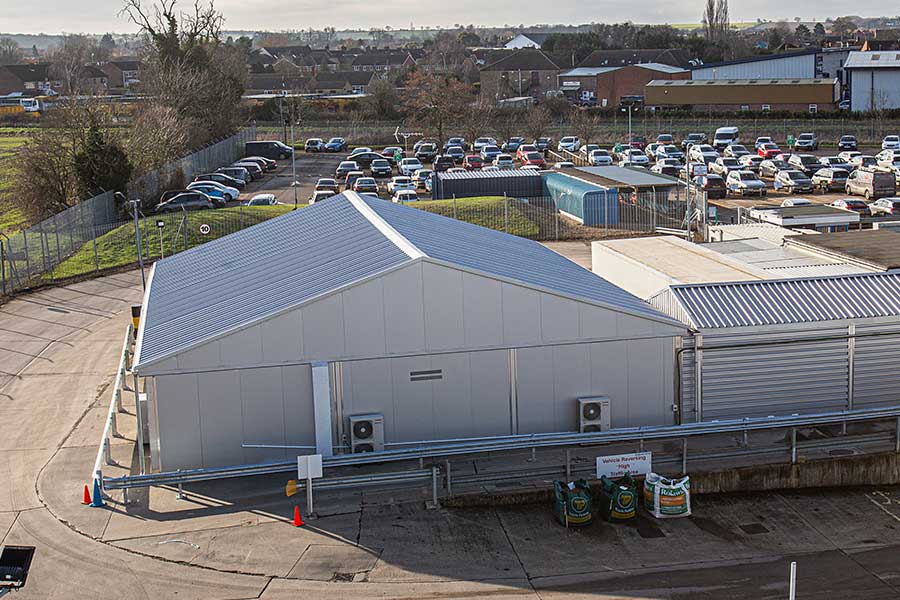
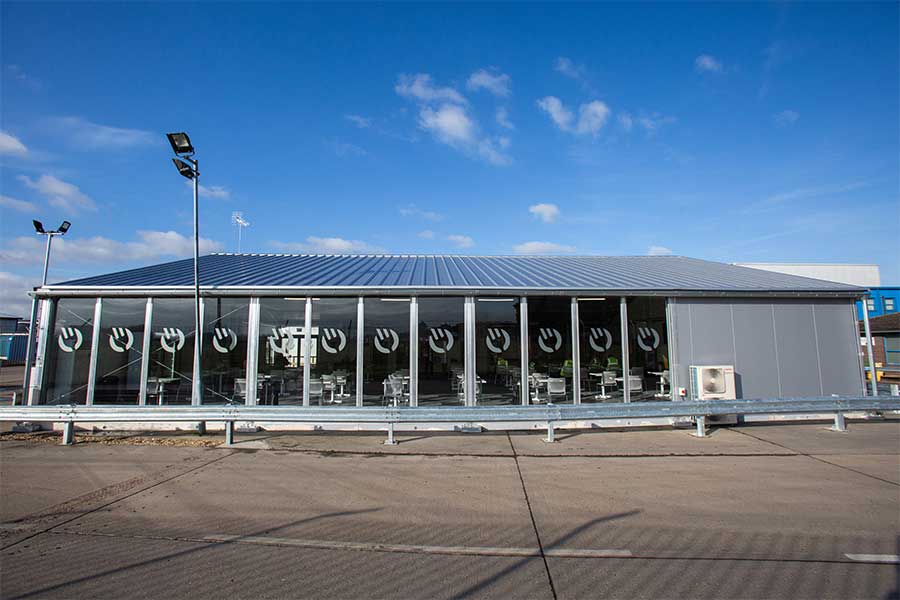
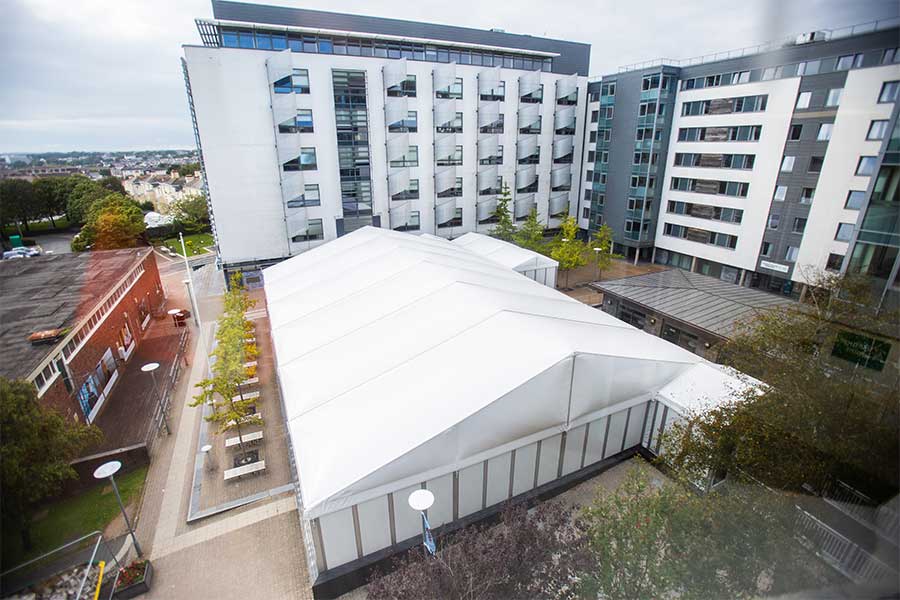
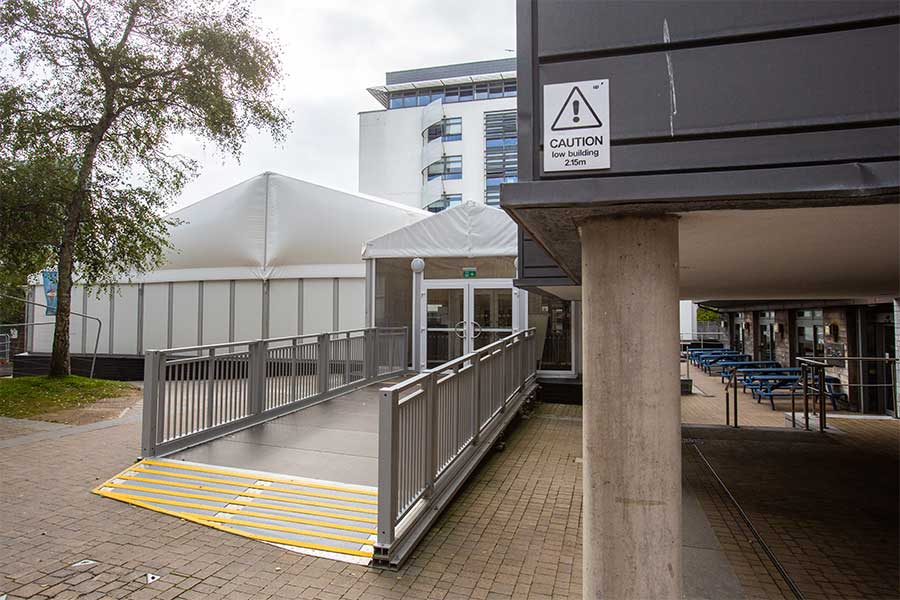
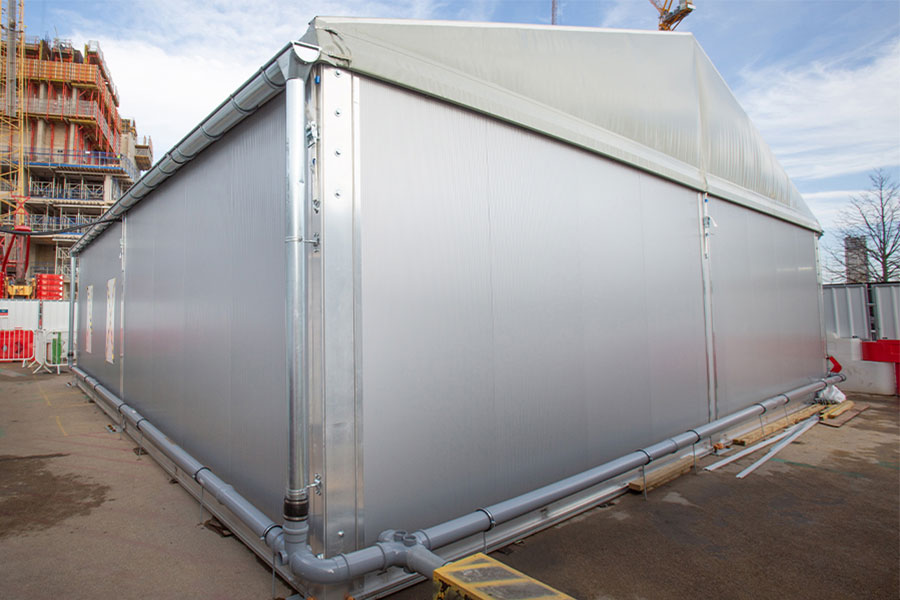
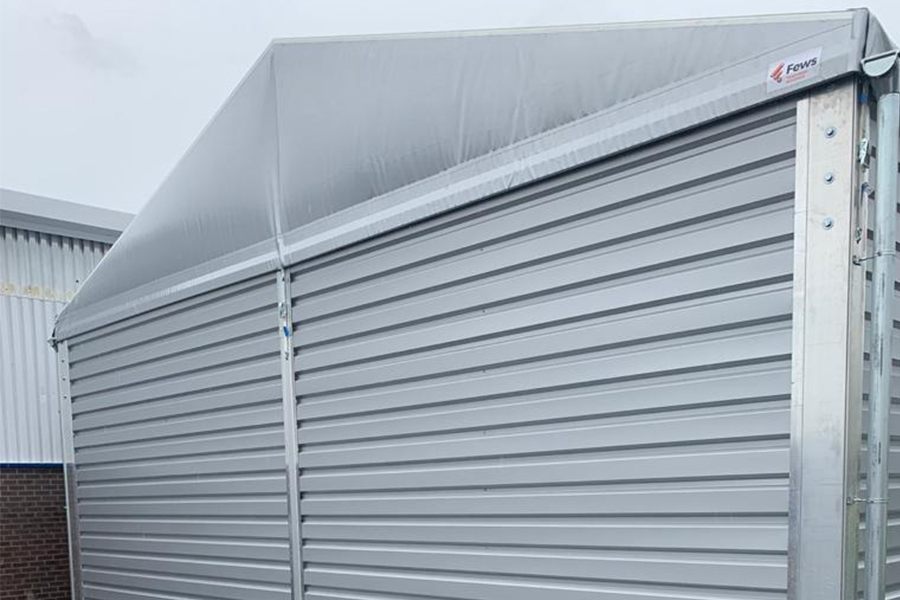



Enjoy our industry-leading service - pick up the phone and let us do the rest.
Call 01527 821789 or email info@temporarystructures.co.uk
Tony, Matt, and Lucy are our dedicated account managers with extensive expertise and experience leading major builds. One of them will guide you through every step of the process.
Request a Quote
